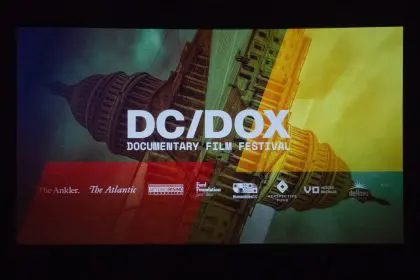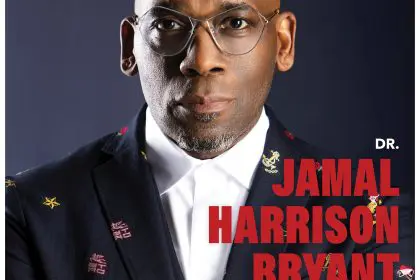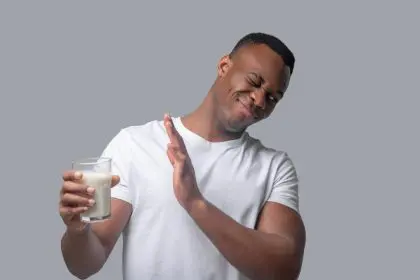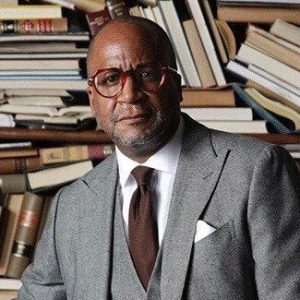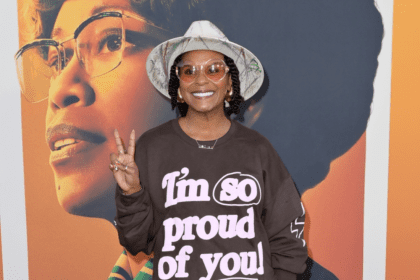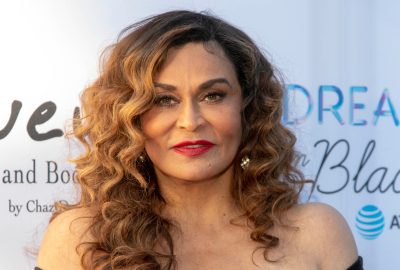
What inspired you to write your first book?
What inspired me to create my first book, Callaloo: A Jazz Folktale and the Callaloo book series was my own cultural identity, a NYC jazz concert and the desire to tell traditional African Diaspora folklore stories through a contemporary perspective. I didn’t intend to write Callaloo as a children’s book. In 2011, I went to see my friend, Etienne Charles, a Trinidadian trumpet player, perform at a jazz club in Manhattan. He performed a few songs from his album, “Folklore” which brilliantly crafted the folklore characters of Trinidad and Tobago into a creolized jazz piece. The characters that I grew up hearing about, “The Soucouyant” and “La Diablesse” were alive in that jazz club that night and within two hours, I saw an entire story based off Etienne’s music. For the next six months I researched the oral folklore traditions of the Caribbean and the Diaspora. The rich culture history and lack of public knowledge of these folkore traditions really motivated me to create Callaloo. After months of writing, reading and listening to my elders, I created my second original play, “Callaloo: Jazz Folktale” which went on to be workshopped at Lincoln Center in New York and the Ellington Theatre in DC. The idea of the book was cultivated after my good friend, from high school, and master visual artist, Nabeeh Bilal attended a performance and approached me about developing the story into a book. Neither of us had any experience in children’s media and books but we were artists who deeply believed in the power of this story. In 2012, we began developing the book via skype (as I was living in Los Angeles and Nabeeh was in DC) and by January 2013, we independently published the children’s book, Callaloo: A Jazz Folktale.
Do you have a specific writing style?
I like writing in different styles and forms. I’m not committed to one particular style. I actually enjoy mixing different styles and aesthetics. When I first started writing my first play, I thought so much about form and how I wanted to break all the rules structurely. I still try to maintain that in my work. My writing process is very experimental and un-traditional and I think that is what has helped me find my own writing style. I have written two plays, a satirical comedy and a fantasy thriller, and two children’s books. My first play was a satire comedy, playing in the form of theatre using the hip-hop theater aesthetic as the anchor. In my second play, “Callaloo: A Jazz Folktale”, it was more of a surrealist thriller that included dance, jazz music, caribbean storytelling and multi-media. In the Callaloo book series, I am writing from a traditional yet contemporary voice. The books focus on the perspective and imagination of American born children who are from first and second generation immigrant families, combining a creolized understanding of Caribbean-American culture, language, history and folklore. Because I am mixing this creolized culture in my own type of stew, I feel like it gives me the liberty to play with style and form even more. In the Callaloo book series, I take traditional folkloric characters and place them in contemporary settings, with the main character Winston, a Caribbean-American boy from New York City as the main character. Winston’s perspective of his grandmother’s Trinidad and Tobago is a “callaloo” perspective, it is a mixing of ideas, emotions and connection to his family’s home. However, the style of the book is rooted in Caribbean folkloric characters, with a mixture of island and American dialect coupled with a magical fantastical storyline.
What books have most impacted your life (or life as an author)?
Two books that have changed my life are Their Eyes Were Watching God by Zora Neale Hurston and The Fire Next Time by James Baldwin. Both of these books influenced me because of their complex characters, storylines and integration of politics, race and gender in the thread of the storyline. Both Baldwin and Hurston’s voice deeply impacted me on discovering my own voice and defining what type of stories I wanted to tell. Zora Neale Hurston is my favorite artist of all time. Her ability to intersect history, anthropology, literature, plays and African-American folklore preservation has been a model and inspiration for my artistic work.
What books are you currently reading? Why this author?
I am currently reading Not that Kind of a Girl by Lena Dunham. I am a huge fan of the HBO show, “GIRLS” and Lena Dunham. She exemplifies the type of artist and woman that I identify as, a curious woman of the world, politically engaged, a feminist, a writer, director, producer who is not boxed in by society’s limitations. Lena Dunham has an incredible voice that captures the realism and complexity of young women today. Her ability to write, direct, produce, act and share her own truth is something I also strive for in my work. Lena is definitely someone I hope to collaborate with in the future.
What new authors have piqued your interest?
I have been intrigued by the work of two writers recently, Nigerian-American writer, Chimanada Ngozi Adichie and African-American food historian, Jessica B. Harris. Adiche’s stories combining immigration, femininity, love, purpose, religion, race and politics are beautifully crafted. Its also very refreshing to read stories with lead women characters that are complex with imperfections that are revealed through the story line. I’ve also been reading the work of Jessica B. Harris as well. Harris writes on the cultural connections of food in the Black Atlantic in the Americas. Her research and connections have been very important to me in understanding food culture and the similarities and differences of food in the Caribbean, Africa, Latina America and the United States. Her research has been a critical building block for me in creating Callaloo.
If you had to do it all over again, would you change anything about your latest work?
I honestly would not change anything about the process of making the first book “Callaloo: A Jazz Folktale”. I learned so many lessons about self-publishing and writing these past two years. I think all of my trials and triumphs have been pivotal in me figuring out what I want and having the confidence to go out and get it.
Is there anything you find particularly challenging about writing or coming up with a concept for your book?
I really had no trouble coming up with the concepts for the “Callaloo” series. However, just like all writers, I get writers block and get stuck with moving forward from time to time. When moments like these happen, I simply step away, take a break from the work and revist it when I’m ready. However, coming up with the concept for Callaloo was natural and free flowing. I think it’s mostly because I keep myself engaged to everthing: myself, surroundings, dreams, friends and family. My inspiration really comes from my own life and community. I think when you are creating your own work, you write from what you know and then expand from there. I write from my own perspective and understanding of culture. It’s through expanded research, that I embrace and integrate new characters, ideas and cultures. I think the best writers and artists are always aware of their surroundings and what’s happening in the world. I think sometimes as creatives of color, we don’t value our own culture, influence and community. We have to take more courageous steps to preserve our history, culture and institutions. Preservation and Re-Imagination are the key concepts of Callaloo. Sometimes, ideas come to me so easy, in my dreams, in the shower, at a jazz club, on the train, a museum or even sitting in the park. I’m always listening to what life is throwing at me and it seems when I listen right, take a bold step, the ideas stick.
What was the hardest part of completing this project?
The hardest part of completing this project was strategizing the logistics as we decided to self-publish. The creative process was easy for me. I have mastered patience in my art form but it was and still is challenging balancing the many hats it takes to produce the work. Traditionally, a publisher would handle all the business aspects in producing a book while the writer can devote all their time to the creative side. For me, that was not the case. I was leading all aspects: creative writing, publicity, performing, book submissions, marketing, development and financing. Although it’s been challenging, as I have been the lead director /CEO of Callaloo, I believe even more in the power of what we are doing. This is not just a book we have built but an entire brand based off African Diaspora cultural storytelling. We have taken something traditional and re-introduced it to a generation of children to embrace in a contemporary and refreshing way. I have had input in all areas, visual design, writing, costumes, shows, website design and video production. It’s hard for many people to believe, but my illustrator, Nabeeh Bilal and I, initially did everything associated with the business. Now we have a strong team of five people committed to building Callaloo. Although it’s been difficult juggling the business and creative ends of this project, it’s also been a blessing because unlike most writers, I had free creative agency to explore what I want. I have no limitations set on me as an artist as well as a timeline demanding work. This project has allowed me to take complete creative control over my own work and build a team of creative professionals who believe in the product.
What advice would you give other writers?
I would tell other writers to live life to the fullest and embrace failure. Take time to travel, meet new people, try new foods, explore new relationships and ways of life. This will help you find your voice. Be patient with your voice, it’s always a work in progress. You will never be satisfied, so just accept that. You never know where your inspiration will come from. Have faith in your work, be courageous and ambitious, think out of the box and most importantly be patient in your process. Study and read different authors, so you get out of your comfort zone. Be open to the idea of failing because that’s when you thrive the most. You won’t know exactly what you’re doing and that’s ok. You should be scared because that’s how you know you’re onto something that will be impactful. It’s never going to be perfect, just be open to the ups and downs of the creative process. It’s the most magical, fulfilling and un-explainable process.
Describe the process of getting published.
In the past three years I have learned quite a bit about the publishing industry and the lack of books geared for children of color. The Cooperative Children’s Center released a study, that out of 3,500 books published in 2013, only 8% were geared towards children of color. Like many other industries, the publishing industry does not invest in everyone. This is particularly why we chose to self-publish our book independently. I was told by many publishers and literary agents that “Callaloo” was not an interesting story, I was an un-experienced writer and that it wouldn’t sell. The initial rejection upset me but it actually fueled me to continue on with the idea indepedently. I knew I grew up on these stories and many other children could identify with it. When I looked closer, I saw how these Caribbean stories were similar to the European folklore stories like Snow White and The Grims Fairytales, that have went on to become Disney movies, tv shows and major brands. I kept asking myself, why cant African Diaspora stories do the same thing. If a publishing company wasn’t going to invest in me, then I would invest in me. It’s not just about re-telling folklore stories to make sales but I’m making history and culture accessible to all children where they take pride in themeselves and expand their understanding of the world. So my illustrator and I decided to published independently, taking on the challenge of printing, formatting, marketing and financing the entire book ourselves and through my production company, Sepia Works. Although those aspects were challenging, it was also so freeing to create on our own timeline as well as empower other authors of color to create their own books and not wait for a publisher. I have adopted this indepdent mindset not just in the “Callaloo” book series but in our web series as well, How to with Callaloo” which is a monthly web-series on YouTube with our puppet version of Winston. Each episode, Winston and his guest, teaches kids a new skill, “how to count in Spanish,” “how to be kind,” “how to rap your ABC’s” and “how to say hello.” With now thousands of viewers watching the series, we have developed interest from tv channels and networks who are interested in partnering with us to create culturally focused childen’s programming.
What were the literary, psychological and/or logistical challenges in bringing your work to life?
Writing can be very lonely. It is often tortourous. You are constantly hearing voices in your head and the goal is to get those voices down in a way that makes sense. A lot of times it doesn’t make sense. Writing is a very couragous act because it is coming from the deepest part of you, your soul. Callaloo: A Jazz Folktale was my first children’s book and it was challenging for me in the beginning to just believe in myself, to keep writing and telling myself that my voice mattered. Many young and new writers doubt themselves out of the process and that is the first step on the long road of writing. You have to believe in yourself and be ready to fail. There were many things I learned about writing and the creative process that were challenging but I never quit and those challenges have become valuable lessons. As I move into writing the second book in the series, I have taken those lessons and adopted them into my new process of writing. As the key producer and director of the book and brand, it is even more challenging to balance the business and logistical end. My business partner, Nabeeh Bilal and I completely self-financed and produced all aspects of the business. There are many moving parts to “Callaloo” and from the outside looking in, people see our beautifully crafted products but know little of the hard work and sacrifice it has taken to get here. I sacrificed relationships, leisure activities and my own personal desires to work full-time on this project. I couldn’t expect people to invest in “Callaloo” if I, the lead creator, would not invest 100%. Although there have been many challenges, I see every challenge as a lesson and reward in the end. I love failing because it means I’m learning. When I’m open to failing, I’m also open to success.
Everyone’s process for writing is different. Explain yours.
I like cleanliness and bareness when I write. I need incense and candles. I prefer to write early, first thing in the morning. Space is very important to me, what I see, smell and hear. All of my senses play a part in what I create when I write. I usually like to write with music, either light classical piano or jazz and lots of food! There has to be good food, tea and coffee nearby. I’m currently writing the second book in the Callaloo series, and every writing session I listened to bomba and salsa music for an hour, so I could [delve] into the world of Puerto Rico. In the early stages of writing, I think of a concept and write it down. I spend 4-8 weeks researching the topic: music, film, oral interviews, academic journals and books. I love the research process because I feel like a detective! After researching, I spend another 4-8 weeks just getting down a basic draft. This first draft is important because I write from what comes naturally to me. I’m not concerned about characters, structure, storyline, perfecting it. Like a jazz musician, I just improve and see where my mind goes without limitations. Then I take another 4-8 weeks writing a new draft every week getting notes from my editors. After I get to about draft 10, I hand it over to my illustrator who begins story boarding the illustrations. We then work for another 3 months on creating a seamless feel between the text and the visuals.
What are five of your favorite books and why?
My five favorite books are:
Their Eyes Were Watching God by Zora Neale Hurston
Sula by Toni Morrison
Crime and Punishment by Fyodor Dostoevsky
Things Fall Apart by Chinua Achebe
Where the Wild Things Are by Maurice Sendak
I love all of these books for different reasons and have emotional attachments to each one. But one thing they all have in common is that they took me out of my own reality and deep into the Wild, into Russia, Nigeria, Ohio and Florida. I remember for each book, I couldn’t stop reading and I dreaded leaving the character evertime I put the book down. I think these authors brilliantly crafted stories and characters that captured the essence of the human spirit. That is a very difficult task.
Please provide three “good to know” fact about you. Be creative. Tell us about your first job or the inspiration behind your writing.
My first job was giving voice lessons when I was 14 in my basement. I made flyers and after two weeks of promoting, I had 4 clients! I was surely an entrepreneur back then.
The arts and sports were very important to my development as a child. I was a very curious, shy and competitive child growing up. I wanted to question everything and understand it. My mom exposed me to the arts from a very early age, taking me to the theatre and museums and enrolling me in ballet by five. Although I was shy (and today I’d say I’m more quiet), I gained my observation skills and appreciation and curiosity for culture and arts from a young age. I also played sports up until I was 14. I played basketball, softball, soccer and gymnastics. My competitiveness and drive were really fostered through sports.
I attended the Duke Ellington School of the Arts, an arts high school in Washington, D.C. where I majored in musical theatre. My time at Ellington really cultivated the foundation of who I am as an artist, scholar and cultural worker today. Very similar to the arts school from “Fame”, we studied with some of the finest professionals in the arts and entertainment business including Debbie Allen, Dave Chapelle and Mike Malone. Here is where I really learned the importance of creating my own work and preserving my history and culture through the arts.
What is the mission you set out to accomplish with your voice in this book?
My mission with the Callaloo book series is to educate all children through culture, folklore and Caribbean Dispora stories. My goal is to engage and empower children to take pride in their own histories and identities while promoting cultural literacy. Through books, digital content, animation, film and educational products, my team is committed to creating culturally creative content for young people.
Who are the authors you reread and why?
I tend to re-read scholarly essays and historical books. I’m a bit of a historian nerd. I love re-reading the work of Marcus Garvey, WEB DuBois, bell hooks, Maya Angelou, Ntozake Shange and Melissa Harris Perry. I enjoy re-reading philosophical and political books because I think it’s poignant to read the work of people who over new intellectual ideas and solutions to the present day. The work by these authors stimulate me as not only an artist but as an active citizen to continuously engage in my community.
A great book has what?
Complex characters, an exciting and unpredictable storyline, a strong command of language and voice while based in some form of truth.
You develop character and ideas by….
By listening and observing what I see everyday. All of my characters are based on people I know or exaggerations of what I see. Ideas come to me all the time through music, travel, food, discussion, fashion, color, nature, exercise, people and animal watching. I am a lover of life and I see stories and new characters everywhere I go.
Where would you travel if you could to write you next book?
I would travel to the Gullah islands to write my next book. I am very interested in the language, history and cultural preservation of the Gullah people and how it has integrated into African American culture and American culture as a whole.
Website: www.callaloothebook.com
Facebook/ Twitter/ IG/ Tumblr / Pinterest: @callaloothebook / @marjuancanady





